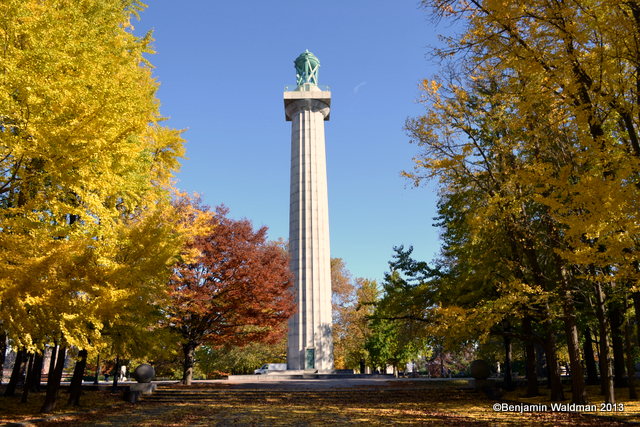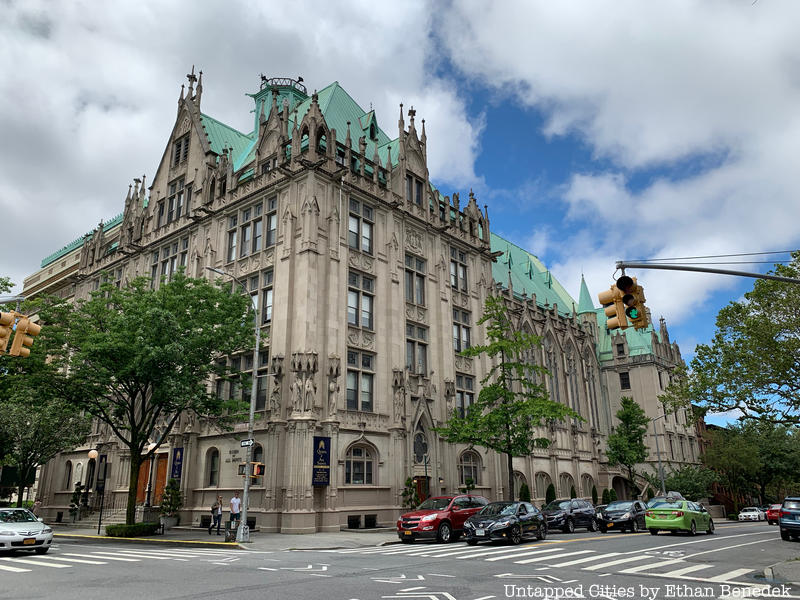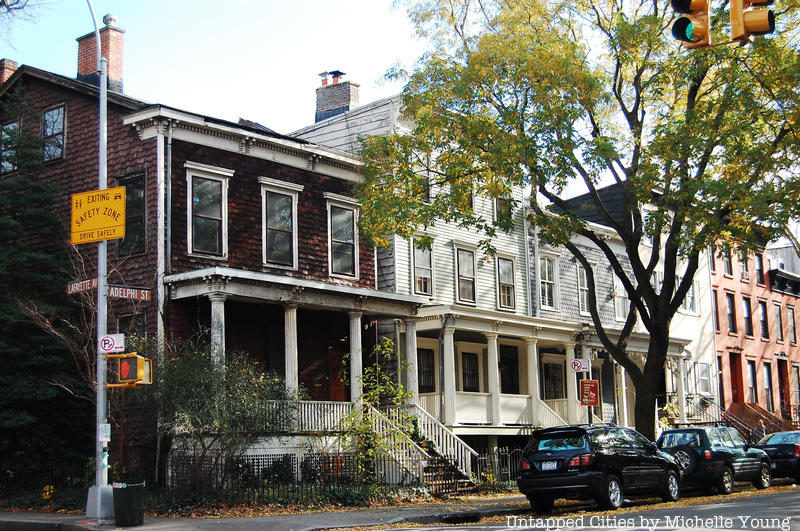
According to The New York Times, Fort Greene is having a bit of an identity crisis. It currently multitasks as a mecca for foodies, a center for African American pride and culture, and a new place to settle for the “nouveau riche.” Today, we’ll pick up where the Times left off to discuss the architecture of the neighborhood.
Fort Greene was listed as a small yet mighty historical district in 1983. The area with the most history is perhaps Fort Green Park. According to the National Register Report for Fort Greene, the 1776 Battle of Long Island was fought here, which left 11,500 dead. This battlefield also featured a fort used during the Revolutionary War and the War of 1812, constructed by General Nathaniel Greene (Fort Greene‘s namesake).

Map of Historic Fort Greene via National Historic Register.
According to Empire Guides, this battlefield was designated Brooklyn’s first public park in 1847, and was later formatted by Olmstead and Vaux in 1867. The most prominent feature of this park is the “Central Prison Ship Martyrs Monument,” designed in the early twentieth century. This memorial honors the American soldiers kept as British prisoners of war in ships stationed along the East River.

Fort Greene is also home to several architectural masterpieces. The most famous among these is the Brooklyn Masonic Temple. Built in 1909, this Masonic temple is regarded as one of the most beautiful structures in the United States.
 The Masonic Temple, seen from the West
The Masonic Temple, seen from the West
According to The New York Times, the original intent of this structure was to be a meeting place for the Masons of Brooklyn (hence the name). In 1977, it was then sold to a “clandestine” Mason group. This group couldn’t afford the daunting cost of upkeep, so they rented out the space on a regular basis. The building now serves as a concert venue, “Masonic Boom.”
Next on our tour is the Brooklyn Academy of Music (BAM), the oldest performing arts venue in America. This music venue opened in 1861 for the Philharmonic Society of Brooklyn. It is now home to experimental and avant-garde musicians.
Another architectural masterpiece, the Queen of All Saints Church, was built in the gothic revival style from 1910 to 1913. The building has been a Catholic school since its construction.

Finally, Fort Greene is mainly characterized by its spectacular and diverse brownstones. Unlike most other brownstones, the brownstones in Fort Greene posses detailed embellishments kept intact beautifully since they were built in the early/mid nineteenth century.

Want to see more of what’s “untapped” at Fort Greene? Check out our Fort Green tag, including life size murals in the beautiful Lafayette Avenue Presbyterian Church, and the outdoor Dekalb Market.





